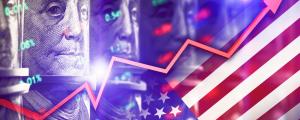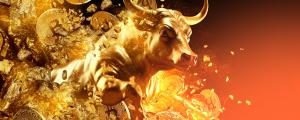There's been talk of a commodities super cycle for years now, and yet hard assets continue to disappoint. With the pandemic and then post-COVID hyperinflation, many had reasonably expected an explosion in safe-haven assets, of which gold is perhaps the quintessential. Sadly for gold bugs, it never seemed to come. Following the initial 25% gain in the first half of 2020, the yellow metal has been decidedly flat, and with inflation hitting double digits for much of last year, this actually represents a decline in real terms. Barring natural swings and corrections, gold has been steady in and around its current price of $1976 since September 2020. And now, as the global geopolitical situation grows increasingly tense month after month, precious metals investors are wondering what it will take to finally see some sizable moves to the upside for gold and silver.
The current illogical lull in precious metals is yet another reminder that old models and theories don't always hold true in today's MMT world. The world's biggest economy, the US, is full of contradictions, and a more certain model doesn't appear to be forthcoming just yet. Despite all the conventional wisdom suggesting that haven assets should be booming, metals continue to slide lower, with gold dropping another 0.7% on 7 November. So, what are the causes of the seemingly unstoppable rot in gold and silver, and what can we expect over the coming months and years as the global community faces more and more instability and uncertainty?
Strong dollar overshadows gold's shine
As a dollar-denominated asset, there's no way that gold can escape the influence of the US national currency. Assuming all other factors remain equal, if the dollar loses value, then gold must axiomatically gain in value. It's worth remembering the historic achievement of EUR/USD parity from September to November 2022 and how that left gold prices looking artificially stagnant.
In reality, what had happened was that gold's real-world gains had merely moved in lock step with the greenback's and were thus invisible to the untrained eye. Now, the Fibre did eventually return to a more familiar 1.12 this June but then edged slowly back down to 1.05. Now that we've seen some more encouraging movement to the upside for EUR/USD throughout October, the yellow metal actually managed to gain more than 6% in October, outperforming euro gold by more than one whole percentage point. And though it has now declined by 0.75% since the start of November, this is less than half the drop seen in the euro price per Troy ounce (-1.9%). Silver managed about 75% of the net gains of its more valuable counterpart, recording a 3.26% rise over the last 30 days. With a strong labour market and inflation close to under control, however, we might be wise to expect the dollar's strength to grow given the ECB's more dovish monetary policy compared to the Fed. This could then negatively impact dollar-denominated precious metals' prices.
A lack of interest
The next major factor affecting the prices of precious metals is also connected to central bank policy: rising interest rates. As we've already touched upon, the Fed has been much more hawkish in its rate-rising cycle, and this has finally paid dividends in the form of a return to the semi-normal inflation rate of 3.7% this month. It's still not quite at the 2% target rate, but Fed Governor Lisa Cook believes the central bank's current interest rate of 5.25-5.50% is adequate to get price pressure down to where they want it.
The problem gold and silver have with this is that they are non-yielding assets. This means that their holders do not receive any interest for holding them. On the other hand, corporate and even Treasury bonds pay their holders a return in addition to the principle, and these increase as central bank interest rates rise. The US 2-year Treasury note now pays a handsome 4.934%, and many AA/AAA corporate bonds are paying well above 5%. In fact, even vanilla high-yield savings accounts are offering 4.5-5.5% interest at the moment.
This easy availability of above-inflation, highly liquid investment options will make it very hard for gold to remain attractive to its target market of risk-off investors looking for stable returns and protection against inflation. For this reason, gold bugs might be disappointed over the coming months, save for a drastic change in the macroeconomic situation worldwide.
Trade gold, silver, and more CFDs with Libertex
Libertex connects traders and investors with financial markets, offering CFDs in a wide range of underlying assets across everything from stocks, indices and currencies to commodities, crypto, and, of course, precious metals. Libertex's extensive CFD trading also offers the option to hedge your positions using the US Dollar Index. The best thing about Libertex's CFD model is that you don't actually have to own any of the physical underlying instruments but can trade them all on an award-winning app. To create your own trading account today, visit https://libertex.org/signup





